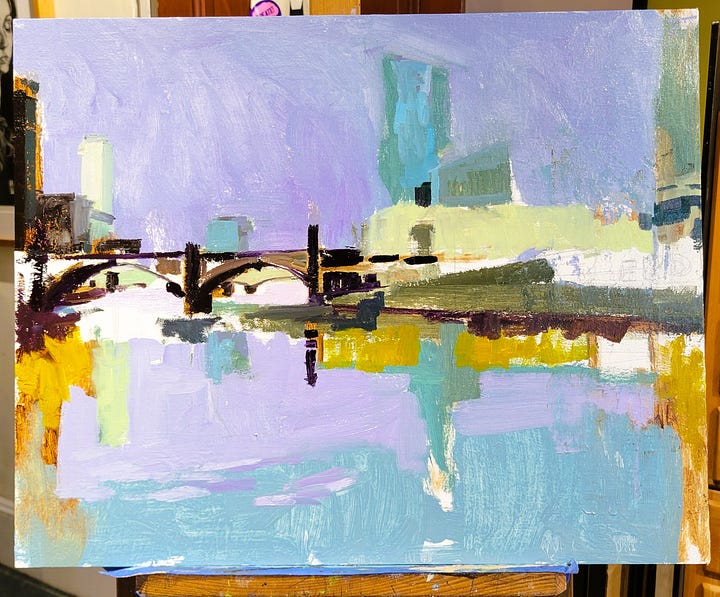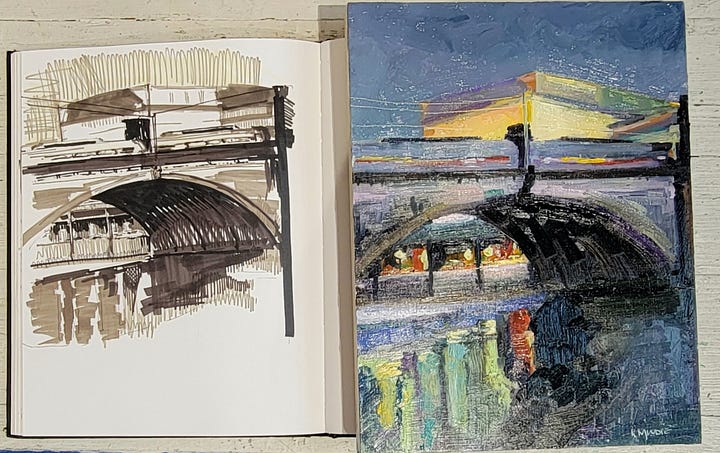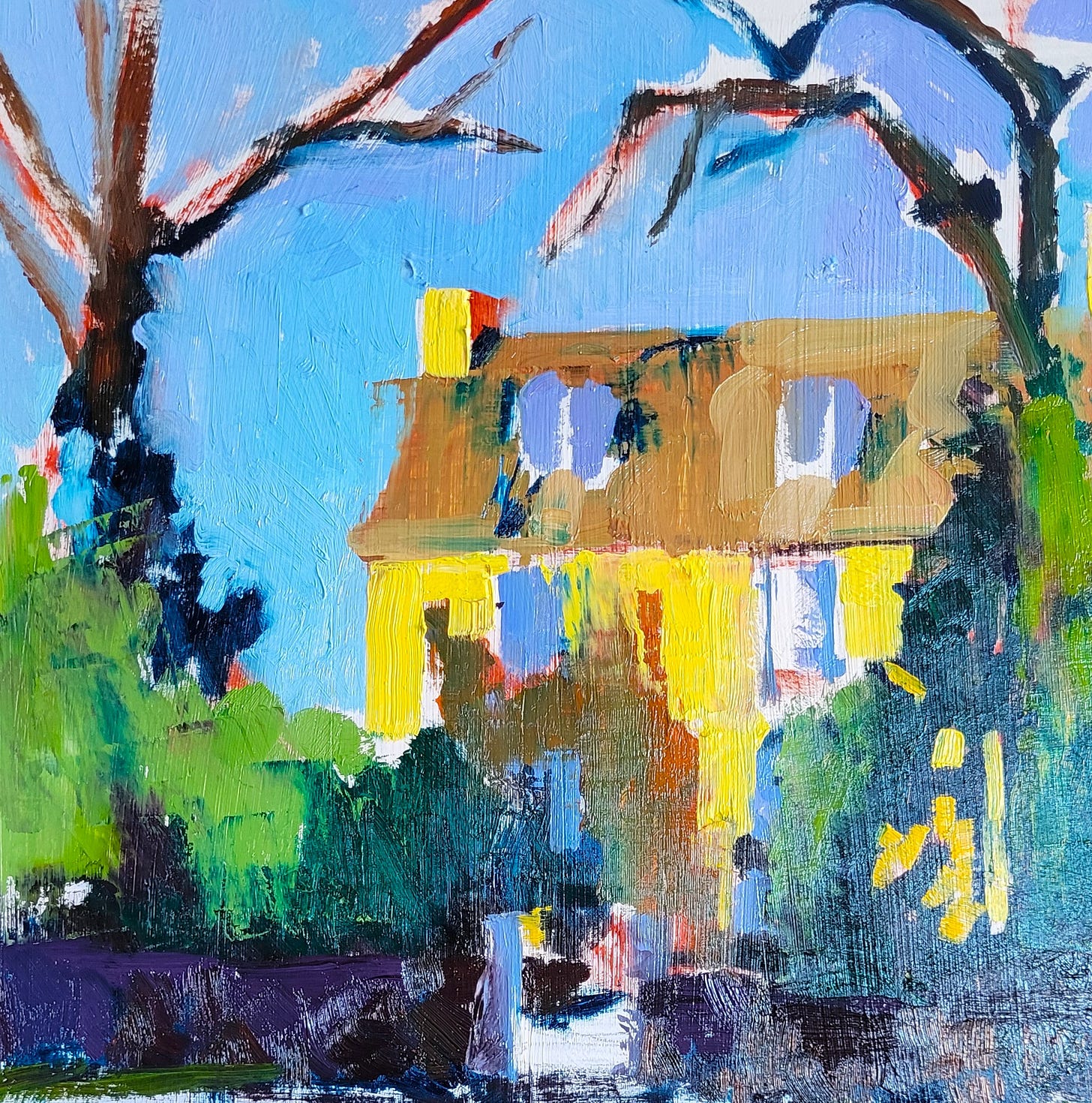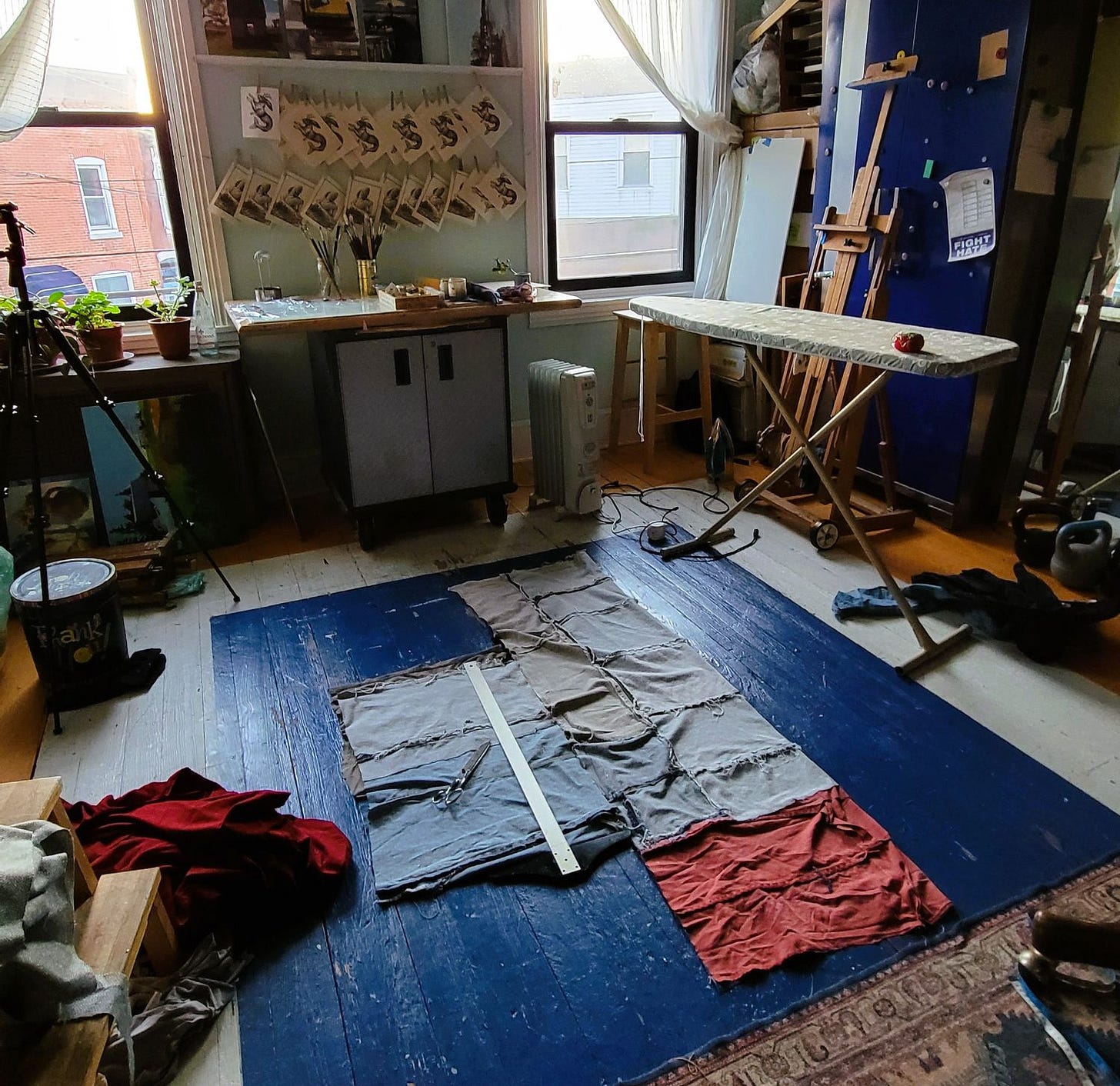

This week in the studio, I was immersed in painting while juggling multiple trains of thought. I thought about how to translate my current techniques into lessons for my upcoming January classes. I pondered content creation for my YouTube channel, an area where I’m still finding my footing. At the same time, I was pushing through challenges in my painting process, reflecting on how my style has evolved over the past year.

Recently, I’ve embraced working with palette knives, a tool I hadn’t used much before, and I’ve started painting on larger surfaces. These changes have forced me to rethink composition and detail. Smaller works require intense editing, focusing on only a few elements within a confined space. Larger canvases, however, open new possibilities: expanded perspectives, more room for detail, and the challenge of deciding where to place focus without getting lost in the minutiae.
While grappling with these thoughts, I found my mind drifting to a sewing project I had set aside. The project, a jacket made from fabric scraps—mostly repurposed pant legs from my children’s outgrown clothes—felt like the perfect diversion. My sewing process is improvisational, often using no pattern, and the results range from intriguing to downright odd. This jacket, inspired by Japanese boro textiles, would feature visible stitching and embroidery.
As I shifted gears from painting to sewing, I realized how different the mental demands were. Sewing, especially constructing a garment, requires thinking in three dimensions—a departure from my usual two-dimensional canvas work. Pinning and cutting fabric on the floor, squatting over the pieces, I found myself fully immersed in problem-solving. How would the pieces fit together? Would the seams land where I intended? This tactile, spatial thinking stretched my brain in new ways.
Unexpectedly, the sewing project provided clarity for one of my paintings. While stitching, a solution to a composition problem clicked into place. It was a reminder of how stepping away can create space for breakthroughs. This "side quest" revitalized my creative process.
The value of side quests isn’t limited to art. Years ago, I worked in an office where productivity was equated with being glued to a desk. One day, frustrated by a problem and overwhelmed by the office’s disorganized systems, I took a walk in a nearby park. I wasn’t "on the clock," but the break was necessary. As I walked, solutions crystallized, and I returned to work with a clear plan. A chance encounter with a VP validated my choice, as he encouraged taking time to think through problems away from the desk.
In later jobs, where constant busyness left no time for reflection, I realized how vital these pauses are. Side quests—whether organizing files, tidying up, or pursuing a creative outlet—allow the mind to wander and solve problems subconsciously. They aren’t aimless distractions but essential resets.
For artists and office workers alike, these moments of detour are where innovation happens. A side quest might seem like an indulgence, but it’s often the key to breakthroughs—a quiet, unhurried space where solutions unfold naturally. So whether it’s sewing, walking, or simply cleaning up dust bunnies behind your computer, embrace the detour. Your next great idea might be waiting on the other side.
For upcoming classes in the Philadelphia area follow this link.
For art tips and to see videos of my process like and subscribe to my You Tube [link].





This popped up in my feed and felt so timely. I was thinking about how my brain is asking for a break, but I'm resisting because it feels like pausing would lose momentum. But I don't have momentum! So, thank you for this reflection. I loved seeing a bit of your work and your side quest.
I enjoyed this peek at your process!
And my experiences have been similar. For some reason, my best creative ideas tend to come to me when I'm hiking or washing the dishes, or apparently also when I'm sleeping (because I wake up with the ideas first thing in the morning).